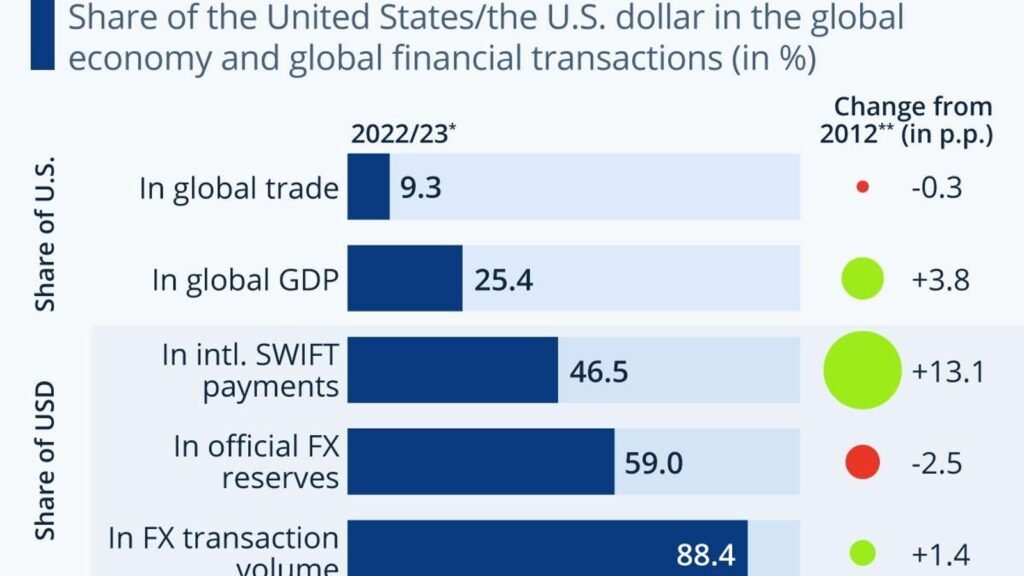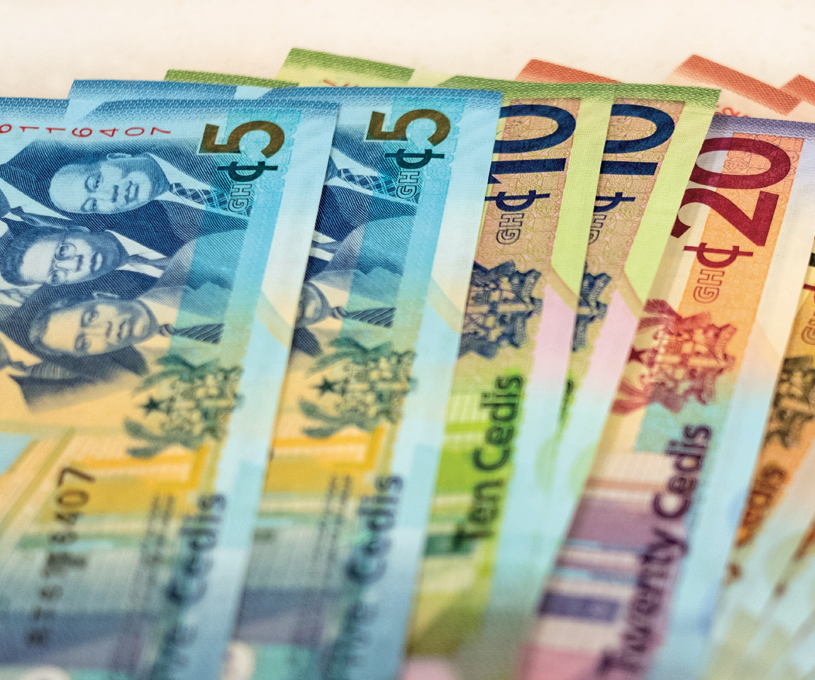The de-dollarization of the world economy has been thrust back into the spotlight with the BRICS summit, which took place in Johannesburg, South Africa, earlier this month. While lacking a spot on the agenda, decreasing the prevalence of the U.S. dollar in trade and financial transactions among the Global South was repeatedly referenced by the world leaders in attendance, for example Brazilian President Luiz Inacio Lula da Silva, who even called for a new common currency for the BRICS bloc.
Looking at trade and transaction data for the U.S. dollar in the past ten years, the currency has so far defended the major role it plays in international markets. It has only lost small amounts of its large influence for some metrics, while it extended its reach in others. Compared to the United States’ share in the international economy and in international trade, the role of the dollar remains outsized.
This chart shows the share of the United States/the U.S. dollar in the global economy and global … [+]
The U.S. share of global GDP stands at around one quarter while the country’s share in global trade in commodities and commercial services is lower, at around 10%. In this light, the U.S. dollar’s role in global trade, reserves and currency exchange that extends far past its country of its origin becomes even more apparent. Due to the United States’ importance in global capital markets and international debt, the dollar continues to play a significant role internationally, Reuters reports.
In July, international SWIFT payments in U.S. dollars hit a new all time high of 46.5% of all payments, up more than 13 percentage points since December 2012. The Chinese yuan, an obvious competition to the dollar, also reached a new high—albeit at just 3% of all international payments. However, the currency topped the dollar for the first time in Chinese cross-border transactions in Q2 of 2023.
An area where the yuan has been more successful—yet also on a small-ish scale—has been foreign reserves. Here, the U.S. dollar has lost 2.5 percentage points in 10 years and 7.5 percentage points in 20 years, while the Yuan climbed from 1.1% of international foreign reserves at the end of 2016 to currently 2.6%. The biggest—and a very stable—footprint of the dollar is in foreign exchange transactions, more than 88% of which involved the currency in 2022.
Small steps towards de-dollarization?
A reshuffling of currency alternatives to the dollar started recently with the exclusion of the Russian ruble from SWIFT payments in the aftermath of the country’s invasion of Ukraine in early 2022. As India continued to buy oil from Russia, it did so partially in Chinese yuan. Earlier this year, it was also reported that China has drastically increased the use of its own currency for commodities trade with Russia. This does not make the yuan a global currency but shows the small steps China is taking to chip away at the dollar’s global dominance.
Within the BRICS bloc, many leaders share China’s opinion on the path to de-dollarization, but the group is far from agreeing on the details, making a massive project like a common currency seem lightyears away. While Brazil’s Lula spoke in favor of the new currency, other members touted the use of existing, alternative currencies, especially the yuan in China’s case. Russia’s stance is also in favor of alternative currencies due to the international sanctions against it. India employed more of a realist stance, lauding its rupee but casting doubt that the current international payment structure will change significantly in the foreseeable future.
—
Charted by Statista






